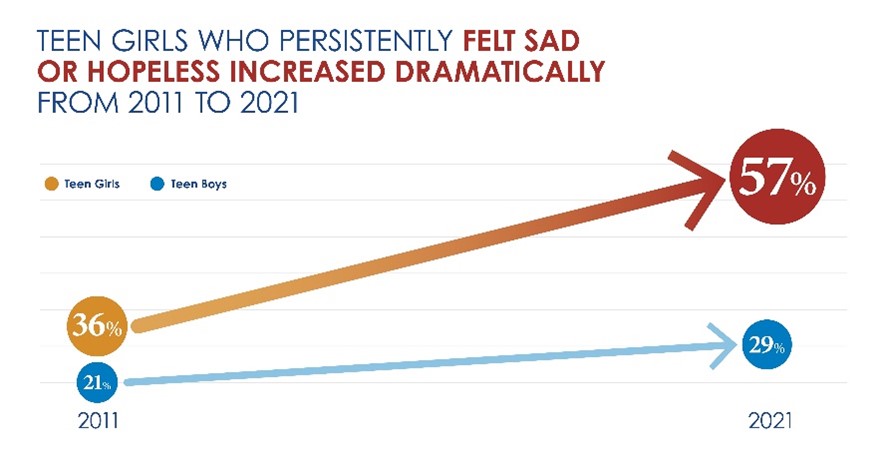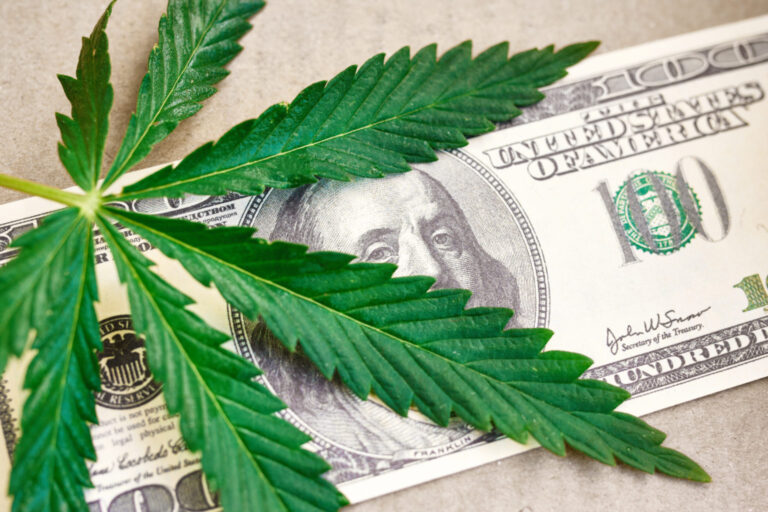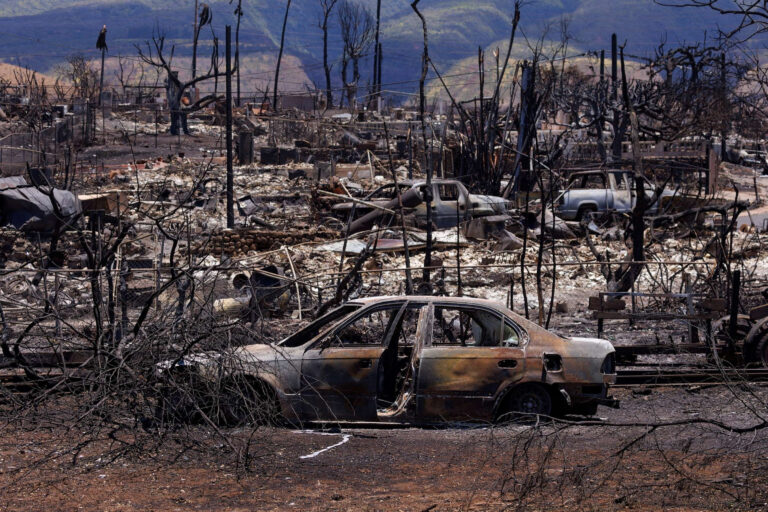The Very Real Mental Health Crisis Among Teens
On February 13th, the Centers for Disease Control and Prevention (CDC) reported a Press Release titled “U.S. Teen Girls Experiencing Increased Sadness and Violence.” In 2021, nearly three in five teen girls “felt persistently sad or hopeless…” Since 2011, the percentage of sad or hopeless teenage girls has increased from thirty-six percent to fifty-seven percent. Sexual violence against teen girls have increased by 20% from 2017 to 2021. The report also addresses mental health issues among the LGBTQ+ community reporting more than one in five LBGTQ+ teens attempted suicide last year. The first step to improving the mental health of teenagers is to detect some of the causes.
In March of 2022, the CDC took a survey from high school students during the COVID-19 pandemic. The CDC stated “…more than a third (37%) of high school students reported they experienced poor mental health during the COVID-19 pandemic, and 44% reported they persistently felt sad or hopeless during the past year.” Correlated with mental health reports, the CDC gained information regarding emotional abuse at home, physical abuse at home, parental job loss, and racist encounters. In all of the categories listed, high school students are reporting more of these issues than before the pandemic.
Aside from the tragedy of the pandemic, gun violence on school grounds has heavily increased in the past decade. Everytown for Gun Safety Support Fund says “In 2017 there were at least 70 incidents of gunfire on school grounds…” Last year, “…there were at least 177 incidents of gunfire on school grounds.” From 2017 to 2022, there has been a 152.86 percentage increase of school shootings in the U.S. In addition to personal stress and tackling the effects of the pandemic, students continue to learn in an environment that becomes less safe everyday.
In regards to social media usage, Statista measured social media usage worldwide from 2017 to 2027. There has been a steady increase of social media usage moving from 2.73 billion users in 2017, to 4.59 billion users in 2022. With approximately 7.88 billion people in the world, the majority of people used social media as of 2022. Middle Georgia State University posted an article in June of 2022, titled “Is Social Media Bad For Your Mental Health.” The university claims “Research studies note the connection between use of social media and its undesirable outcomes that increase incidence of anxiety, stress, depression, body image concerns, and loneliness in teens and young adults.” The article goes on to explain how the instant gratification of social media changes the brain’s reward system; creates an addiction cycle relating to social media usage.
The CDC encourages “school connectedness” in response to the recent report. Stigmas against conversations regarding mental health have decreased in recent years, but still remain a rampant issue in our society. Fortunately, some government officials have been advocating for more initiatives that address students’ mental healths. Governor of Wisconsin Tony Evers announced plans to tackle the mental health crisis among students. WisPolitics.com shares that Evers’ “…2023-25 biennial budget proposal will provide an increase of more than $2.6 billion for public biennium…” The budget includes funding to improve literacy, expand on mental health services, increase financial literacy, address staffing shortages, and increase special education aids. The CDC’s study is a cry for help from teenagers across the nation. How the government and local institutions address these devastating statistics is, for the most part, up in the air. Although this report was heartbreaking, many officials have not addressed these severe issues.






